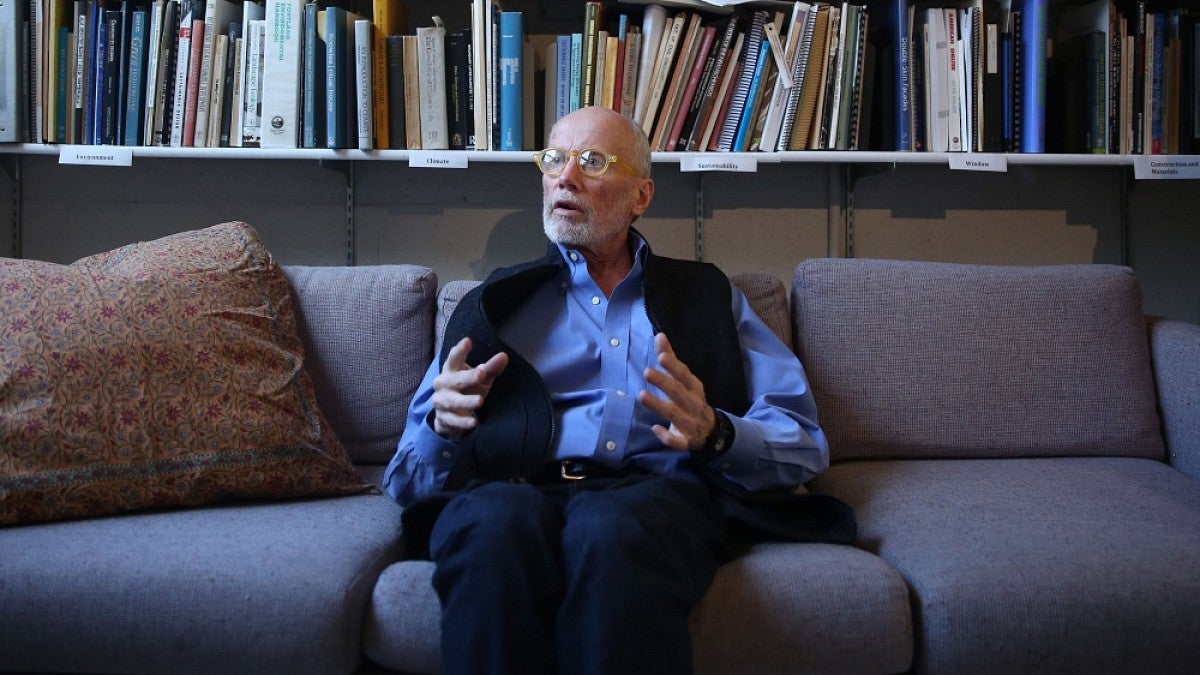Philip H. Knight Professor of Architecture G.Z. “Charlie” Brown died Feb. 15 at his home in Eugene. He was 77.
Brown was a singular and exceptional teacher, dry fly angler and father who spent his entire adult life pursuing a vision to leave the world a little better off than when he joined it.
Brown joined the faculty in Department of Architecture at the University of Oregon in 1977. Over his four decades at the UO, Brown created one of the most highly respected, university-based architectural research labs in the world.
Through the Energy Studies in Buildings Laboratory, Brown envisioned transformational ideas and built a team dedicated to implementing them. Colleagues call the buildings lab Brown’s legacy, one that will continue to champion his vision, mission and spirit.
Throughout his career, Brown modeled intense dedication to and relentless pursuit of his ideals. He worked tirelessly to transform design and innovate design technology, practice and building operation to combat climate change.
Brown earned graduate degrees in industrial design at the University of Michigan in 1966, business at the University of Akron in 1971 and architecture at Yale University in 1974. He was a registered architect in Oregon, a Fulbright scholar in Norway and Nigeria, and spent three years as an assistant professor at Washington University in St. Louis before joining the faculty at the UO.
Brown first authored “Sun, Wind, and Light: Architectural Design Strategies” in 1985, providing the foundation for modern passive design principles, including daylighting, natural ventilation and night flush cooling. He was among the first authors to describe the challenges that climate change places on architects to design buildings for greater resiliency.
He was a founder of what is now the Society of Building Science Educators, which has improved sustainable design education worldwide. In 2002, he helped developed a theory and practice of integrated design that has made possible recent advances in net-zero energy buildings.
In 2000, Brown was honored by the Architectural Research Center Consortium with the James Haecker Distinguished Leadership Award in Architectural Research. He was elected to the College of Fellows of the American Institute of Architects in 2006 and selected as a Fellow by the American Solar Energy Society in 2005.
He received the U.S. Green Buildings Council 2005 Leadership Award and the Cascadia Fellows Lifetime Achievement Award in 2008 for his work on sustainable building practices. He received both the PLEA Award and the Philip H. Knight Professor of Architecture Award in 2009.
In 2010 he co-founded the Biology and the Built Environment Center, which launched a new field of indoor air quality research. In 2015, U.S. Rep. Peter DeFazio read remarks into the Congressional Record recognizing Brown and his accomplishments.
In his final years, Brown developed pathways for peak-zero, energy-positive buildings and was working on a book focused on elegant design of windows.
Brown was principal investigator on more than $20 million of externally funded research, including grants with the U.S. Department of Energy, U.S. Environmental Protection Agency, the Northwest Energy Efficiency Alliance, U.S. Department of Education, U.S. Department of Commerce, Bonneville Power Administration, Energy Trust of Oregon and the Alfred P. Sloan Foundation.
During his directorship of the buildings lab he supported more than 200 graduate research assistants, authored more than 100 research publications, gave more than 100 invited lectures and provided design assistance in energy-conscious design on more than 20 million square feet of buildings internationally, amassing more than 500 consulting reports. Additionally, he developed nine software licenses, including Energy Scheming, and two technology patents.
In her 2017 Festschrift book honoring Brown’s career, Frances Bronet, former dean of the UO School of Architecture and Allied Arts, now the College of Design, and current president at the Pratt Institute, described Brown as “a generous and thoughtful colleague, dedicated to excellence and rigor, advising on difficult situations, from collegial interaction to curricular ambitions.”
Condolences and remembrances can be submitted as a comment in a blog set up by colleagues. Donations can be made to support Brown’s legacy, vision, and cause online.
This page will be updated with more information about a memorial service in the near future.


